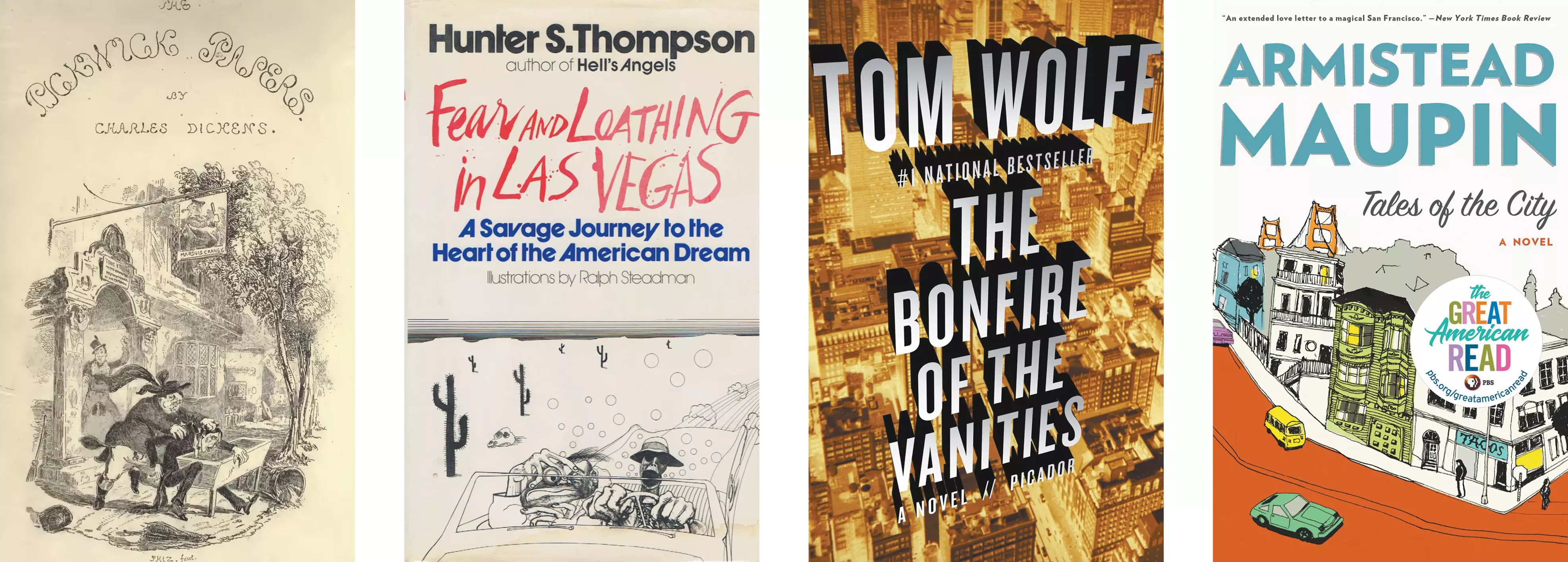
It's hard for the modern mind to fathom, but The Pickwick Papers, by Charles Dickens, was pretty much the Game of Thrones of its day. Published in 19 installments over 20 months, the story of four gentlemen and their gentlemanly adventures across the English countryside was a smashing success — so much so that Victorian audiences were said to have crowded the docks on publication day, eager to pay their shilling for the latest installment, and even the poorly educated lower classes knew the names of all the characters and would gather to hear it read aloud.
It wasn't the first serialized novel by any means, but it was arguably the first commercially successful one, spawning bootlegs, imitators, several theatrical productions and even a Pickwick Papers joke book.
Not bad for a story without sex, violence or dragons.
With publishers recognizing the lucrative power of releasing a story piece by piece, periodicals in the U.K. and the United States rushed to sign such up-and-coming authors as George Eliot, Arthur Conan Doyle, Wilkie Collins, Henry James, Herman Melville and Harriet Beecher Stowe. Serials eclipsed full-length novels in terms of popularity, due in part to their portability and their low cost.
Some magazines got their start with the express purpose of publishing serial fiction and grew in popularity right along with their authors, including The Strand, Scribner's Monthly, The Atlantic and Harper's.
The demand for serials — at least in print — ebbed in the 20th century with the advent of television and radio, but experienced a brief resurgence in the 1970s and '80s. Hunter S. Thompson's Fear and Loathing in Las Vegas was first published in serialized form by Rolling Stone in 1971, followed by Tom Wolfe's The Bonfire of the Vanities in 1984. Armistead Maupin's Tales of the City, detailing the intertwined lives of a handful of San Franciscans, was published in the late 1970s and early 1980s by the San Francisco Chronicle and similar location-specific serialized novels ran in their respective city newspapers in Boston, Chicago and Marin County.
Television and podcasts are creating a renewed appreciation for serial storytelling. Prestige TV shows — Big Little Lies, Game of Thrones, The Handmaid's Tale, Wild Wild Country and even American Vandal — deliver sweeping narrative arcs that unfold over multiple episodes and seasons, and podcasts like Welcome to the Night Vale, Lore and, of course, Serial, create demand for stories, told in 30-to-60 minute chunks, that follow a specific mystery or exemplify a theme.
Serial Box, claiming to be "HBO for Readers," is a subscription service offering audio and/or text fiction developed by teams of writers, just like your favorite TV show. And in a bit of genius marketing, Penguin Random House launched Season of Stories, in which new stories arrive in your inbox every Tuesday and unfold in daily installments before wrapping up each Friday. The new season begins Oct. 11.
In an opinion piece for the Washington Post, writer Hillary Kelly suggests that the secret ingredient of serial storytelling is tension, and how it arises not only from the text but also the removal of control from the reader. I would suggest that perhaps a return to serials' periodical roots is also in order, particularly on a local scale.
In addition to the egalitarian sensibility of a free paper, the tactile familiarity of ink and newsprint, how delicious to pick up a fresh Inlander and not only have to wait for the next chapter of an unfolding story but wonder if the characters are based on people you actually know? ♦
Sheri Boggs is the Youth Collection Development Librarian for the Spokane County Library District and a judge for the Washington State Book Award.
